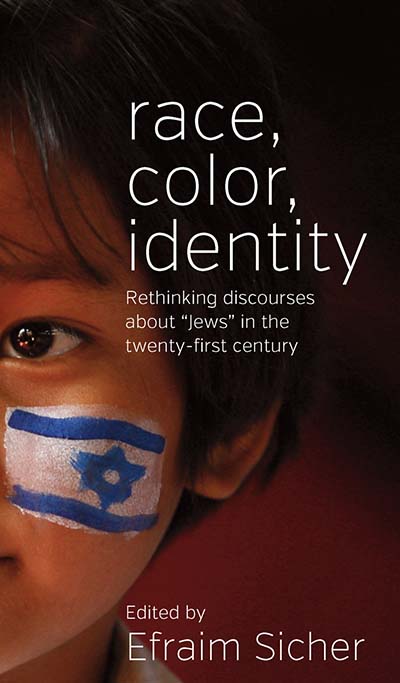Race, Color, Identity: Rethinking Discourses about ‘Jews’ in the Twenty-First Century, published May 2013, opens a fresh discussion about Jewish racial identity in the Twenty-First Century. Below, editor Efraim Sicher shares how a resurgence of racism, advances in genetic technology, and social and cultural constructs have given fresh breath to a discussion within the volume of what Jewishness means today.
____________________________________
 Berghahn Books: Did any perceptions on the subject change from the time you started your research/compiled the contributions to the time you completed the volume?
Berghahn Books: Did any perceptions on the subject change from the time you started your research/compiled the contributions to the time you completed the volume?
Efraim Sicher: The project started with conversations among researchers in different fields who were concerned with the resurgence of racism and anti-Semitism—originally the project was to include a wide range of issues from art to postcolonialism, but then I realized that what we were really talking about was discourse, that is the discourses about “Jews” in both the academic world and in public spaces. It is discourse that forms our perception of the Other, whether it is the “Jew” as Other, or other minorities viewed by Jews. This allowed us to break the binary lock of White/Black in American race discourse and look at how these perceptions were formed, how they developed, and how they look today.
BB: To what extent do you think the book will contribute to debates among current and future academics within the field?
ES: Once we understand that our perceptions of “Jews” are socially and culturally constructed, we can start to talk about Jewish identities at the intersection of social behavior, demography, and cultural interaction. We have deliberately widened the prism to include Europe and Africa, acknowledging that many Jews of color do not fit into present paradigms. This should change the way scholars speak about Jewish identities.
BB: Do you think there are aspects of “Race, Color, Identity” that will be controversial to other scholars working in the field?
ES: Definitely. Our wide range of discussion, including Black Jews or Blacks as Jews, and the analysis of complex mutual perceptions of Jews and Blacks go against the grain of scholarship, though in the last few years there has been increasing recognition of Jewish diversity around the world.
BB: What inspired you to research and write on the topic of Jewish racial identity?
ES: Your question presumes Jews have a “racial” identity, and we wished to ask why Jews have been racialized, and, indeed, why ethnicity, religion, and skin color have determined attitudes towards Jews, who have, at least in North America and Western Europe, long become White.
BB: What is one particular area of interest or question, that hasn’t necessarily been the focus of much attention, which you feel is especially pertinent to your field today and in the future?
ES: Well, genetics has been very much in the news, with much controversy over media coverage of “Jewish” diseases, genetic screening to determine identity, and claims that the Cohanim (priests) can trace a common ancestry. Some scholars have returned to a biological identity, assuring us that the “Jewish” body does have its own pathology or that there is a basis for the myth of “Jewish” intelligence. We attempt to sieve the false from the true in scientific advances that could offer useful tools for anthropologists and historians, but also alert scholars to the risk of a populist or political use of genetics that again racializes the Jews.
__________________________________
Efraim Sicher is Professor of Comparative and English Literature at Ben-Gurion University of the Negev, Beer-Sheva, Israel. He has published essays and books on modern Jewish culture, Holocaust memory, and anti-Semitism. His most recent books are The Holocaust Novel (2005), Babel in Context: A Study in Cultural Identity (2012), Rereading the City / Rereading Dickens (2nd edition 2012), and Under Postcolonial Eyes: Figuring the “Jew” in Contemporary British Writing (with Linda Weinhouse, 2012).
